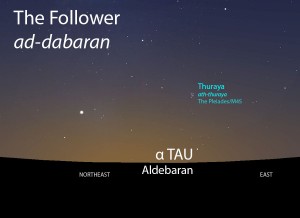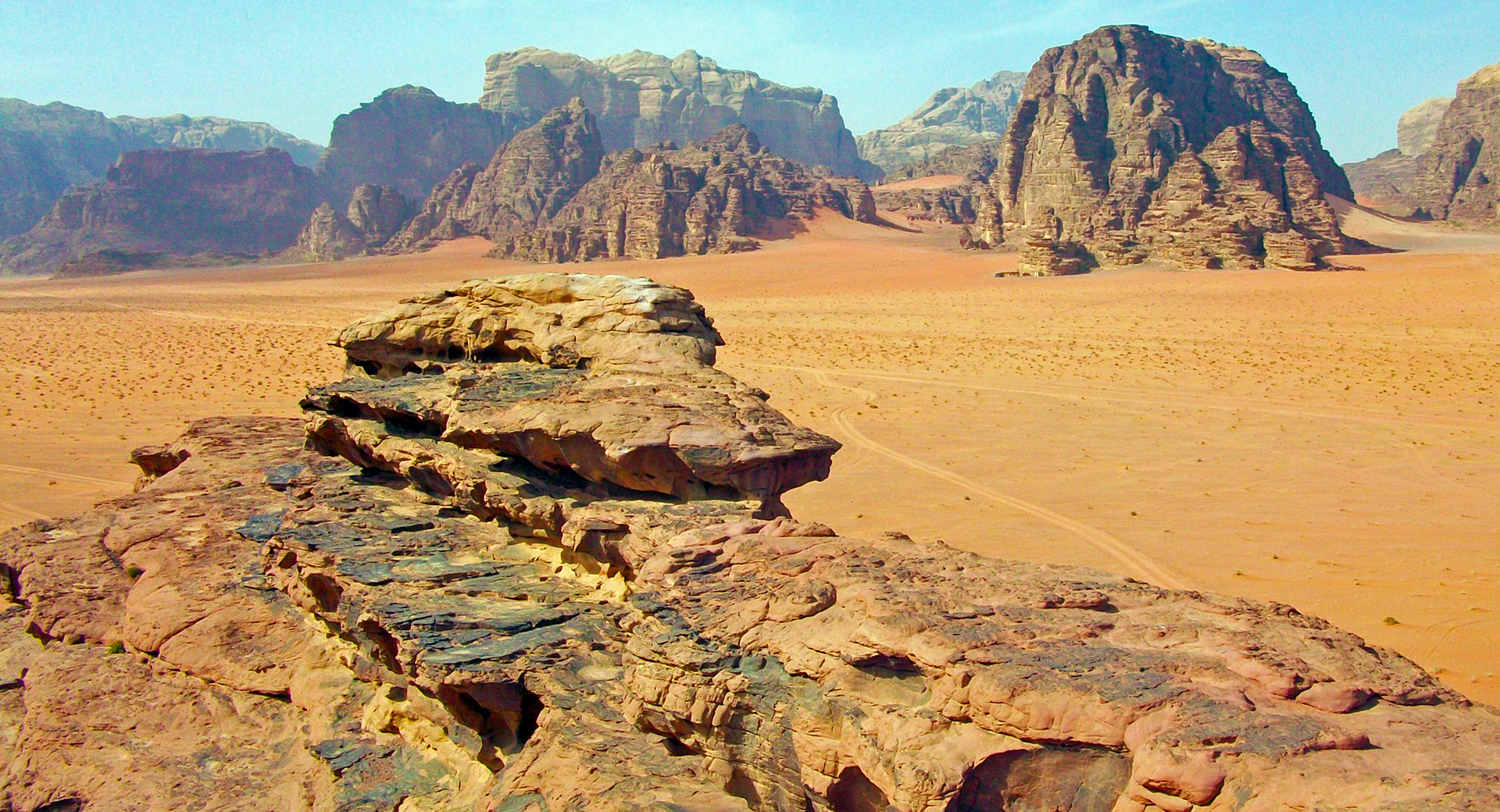Feature image by Daniel Case CC BY-SA 3.0, via Wikimedia Commons
The Follower, a Rising Star of Summer
If you followed my blog posts through the rain star calendar of Qushayr, you may remember that the Follower (ad-dabaran) of Thuraya was the only star that marked a period of no rain. It was also the only rising star in that calendar of setting rains stars. In the rising star calendar presented by Qutrub (d. 821 CE), the Follower was the second star of summer, and it likewise marked a period of intense heat.
اذا طلع الدبران توقدت الحزان وكرهت النيران واستعرت الذبان ويبست الغدران ورمت بأنفسها حيث شاءت الصبيان
When the Follower rises,
the rugged lands abounding in jagged rocks burn,
the fires are hated,
the flies spread like fire,
the pools of water left by torrents dry up,
and the young children throw themselves wherever they desire.Rhymed Prose

The Follower (ad-dabaran) of Thuraya as it appears rising in the east about 45 minutes before sunrise in late June. Sky simulation made with Stellarium.
Here in Tucson in 2017, we see the Follower rise in the pre-dawn twilight in late June, which fits the description of heat pretty well. Back in 9th century Arabia, the Follower would have risen in mid to late May, but don’t let that date fool you. It was a time of intense heat, so much so that this period was called the Intense Midday Heat of the Follower (waghrat ad-dabaran), which was said to be hotter than the period before it, the Intense Midday Heat of Thuraya. At the rising of the Follower, people would hunt the gazelles in their coverts because the intensity of the heat kept them there much of the day. To make matters worse, the winds intensified at this time of year, producing very hot, suffocating sandstorms called simooms. These powerful sandstorms would scour your skin if you were outside and unprotected when they struck.
It is in this context that we can better understand the Follower’s piece of rhymed prose above. The rugged, elevated tracts of rocky earth soak up the rays of the sun and become intensely hot to the touch by afternoon. This heat, coupled with a lack of rain, also makes the air and earth very dry, so the seasonal pools of water left over from the spring rains evaporate, leaving depressions in the earth where they once were. With no cold in the air, flies multiply in number, and they become absolute pests that vex people and animals alike. In the evenings, people hate kindling fires because it is still so hot, but they must eat, so they stay away from the burning fires as much as they can. The children “throw themselves wherever they desire,” because the heat means they no longer have to fear the cold or the rain, and so they play around care-free.
Observing the Follower
The Follower is a brilliant red star that is easily visible through the growing light of dawn. It was called the Follower because it rises and sets right after the marvelous star cluster called Thuraya (ath-thuraya). To locate it, keep an eye on Thuraya while the sky is still a bit darker. The Follower will appear directly below it. To learn more about the Follower, visit its entry in the Arabic Star Catalog: The Follower (ad-dabaran, الدبران).
What’s next?
The heat continues when the next star grouping rises in about two weeks. Until then, stay cool, and let me know in the comments if you’ve been able to spot the Follower rising ahead of the sun in the eastern sky.

